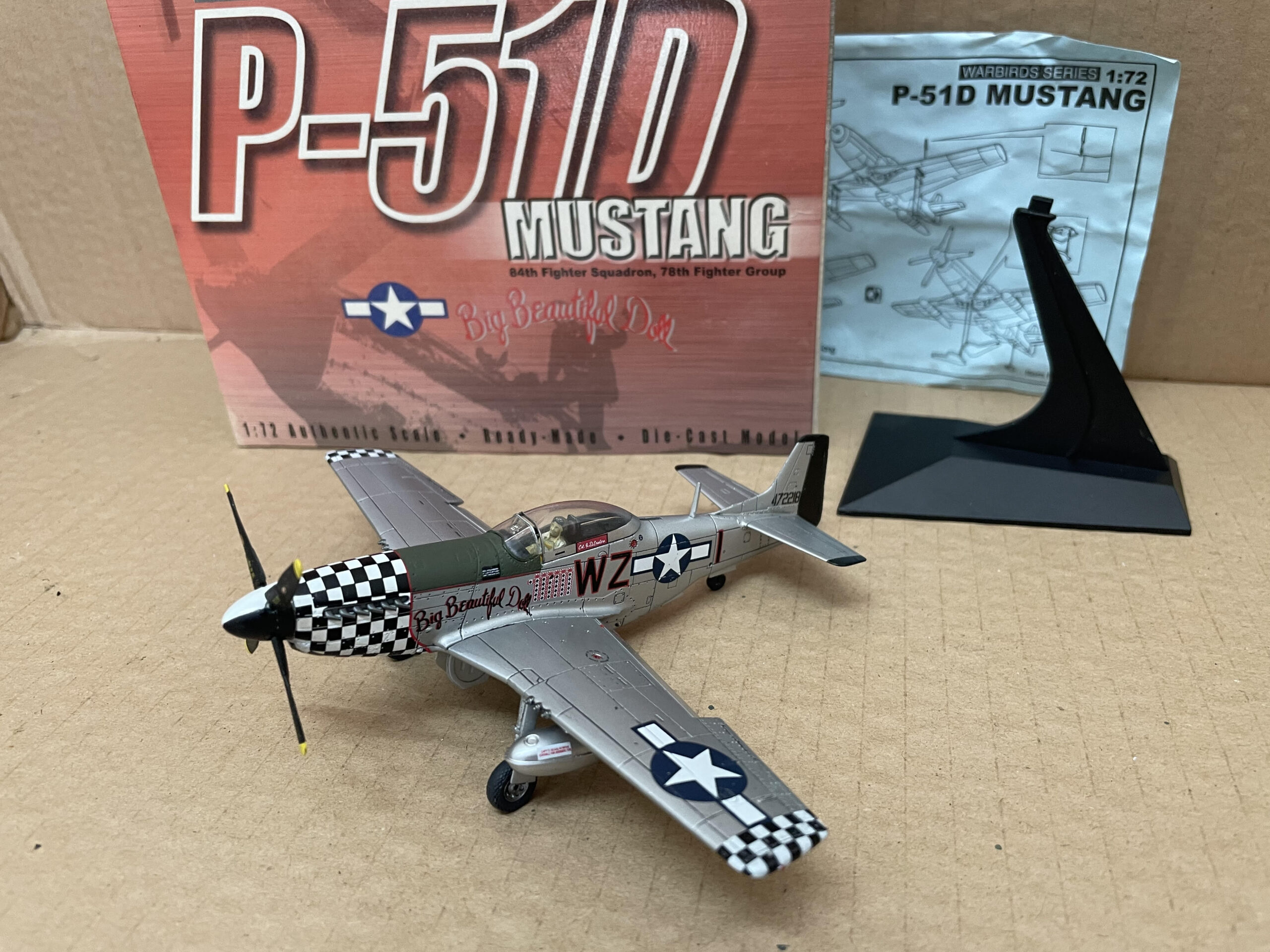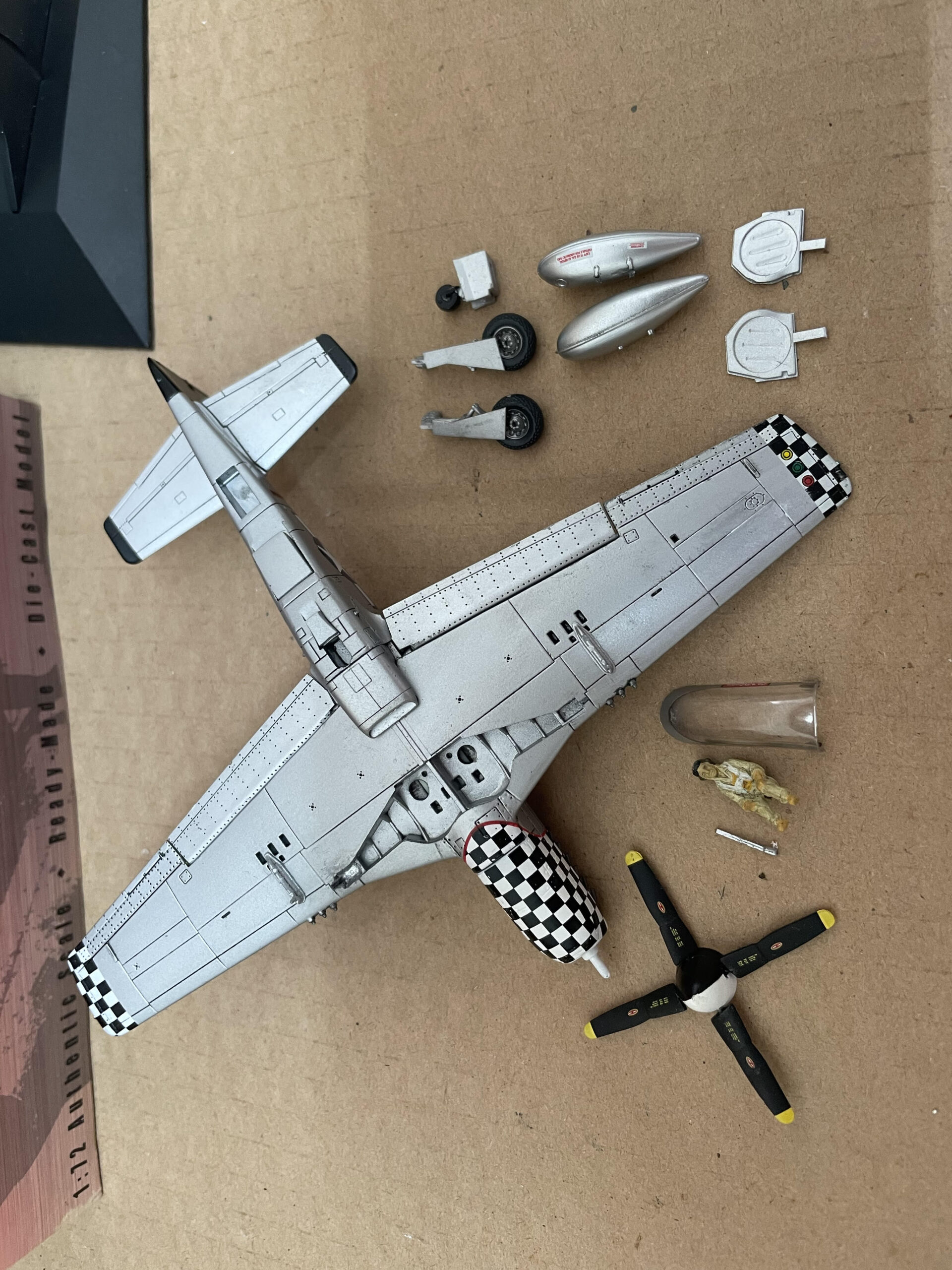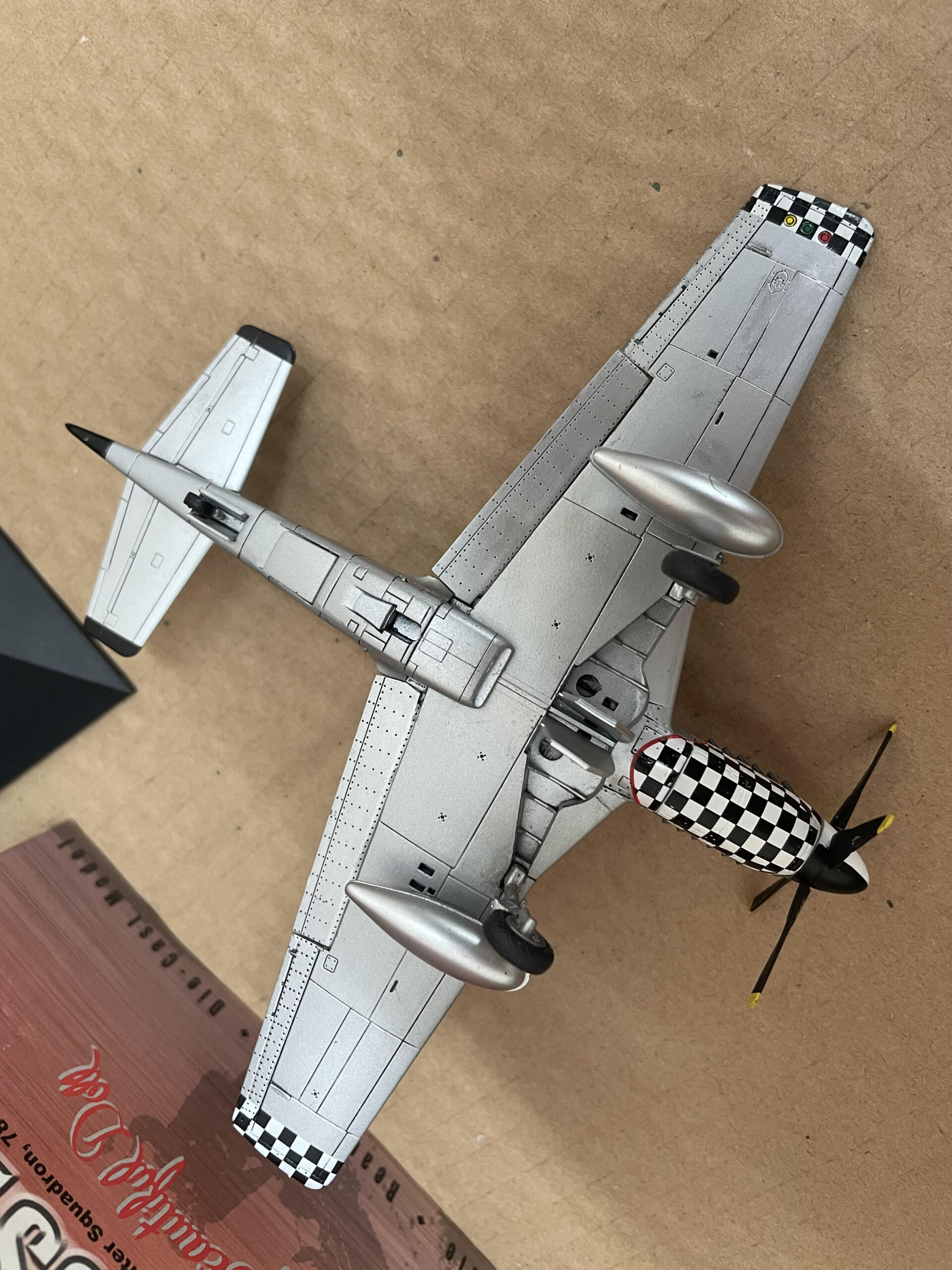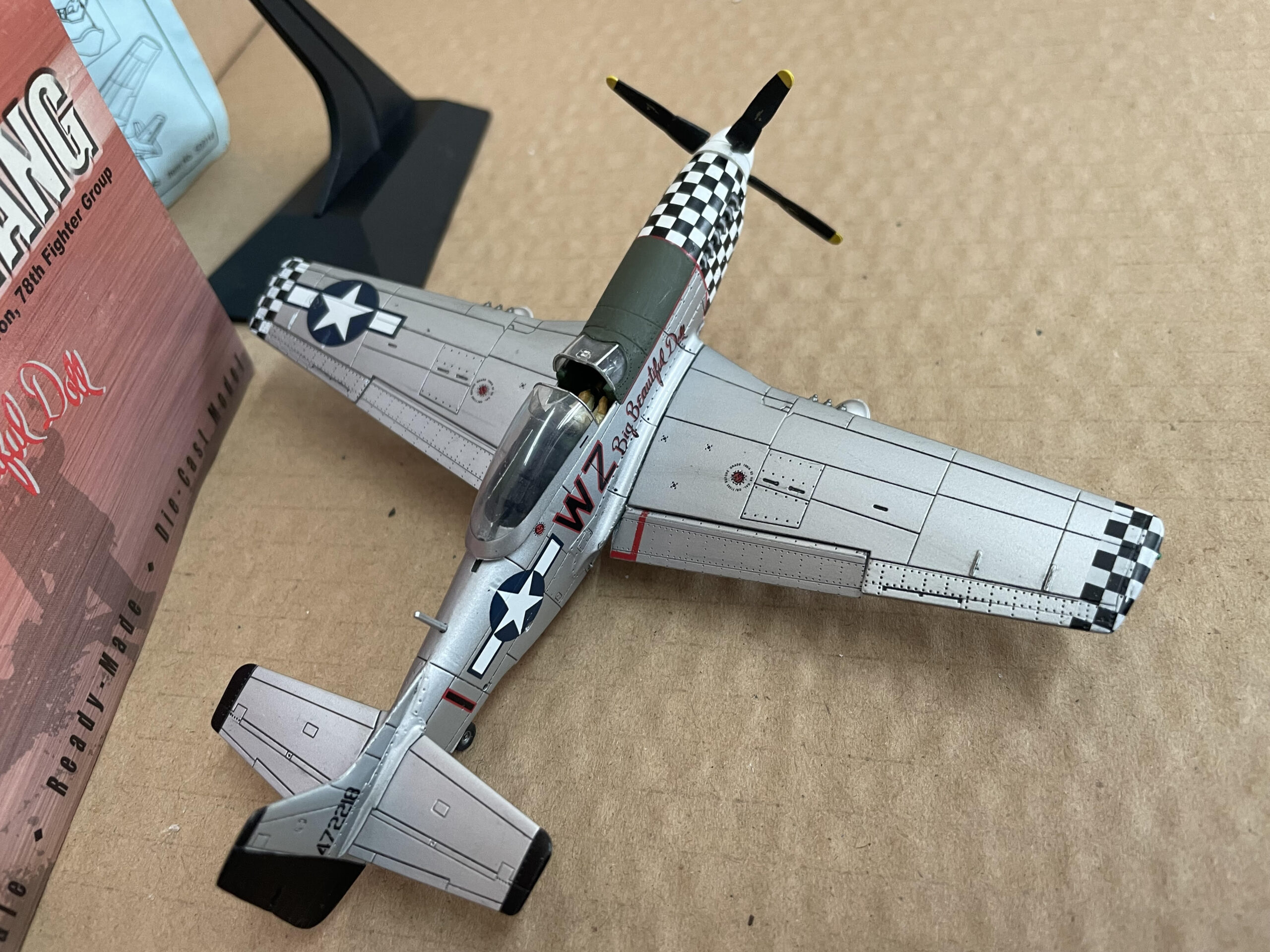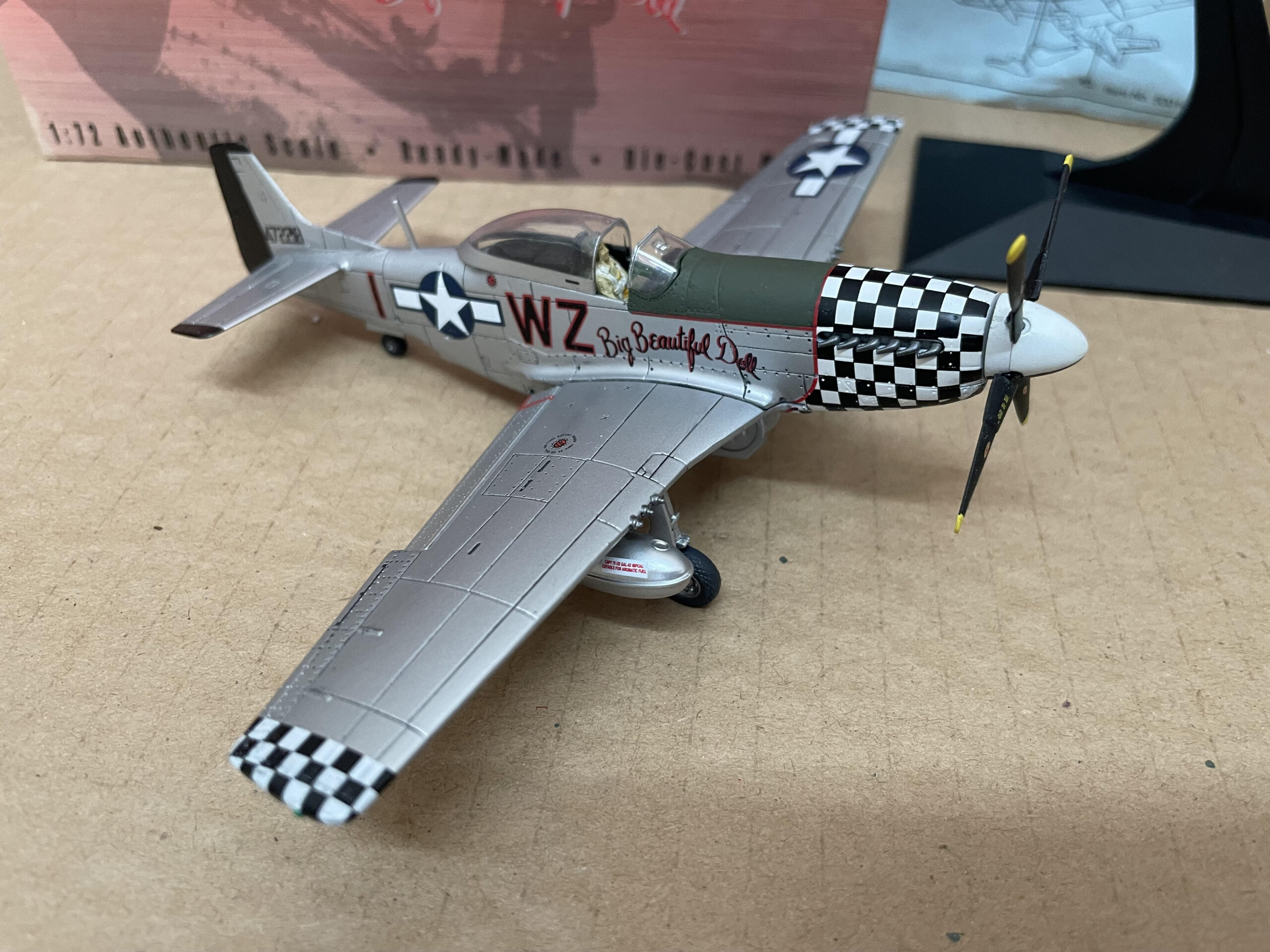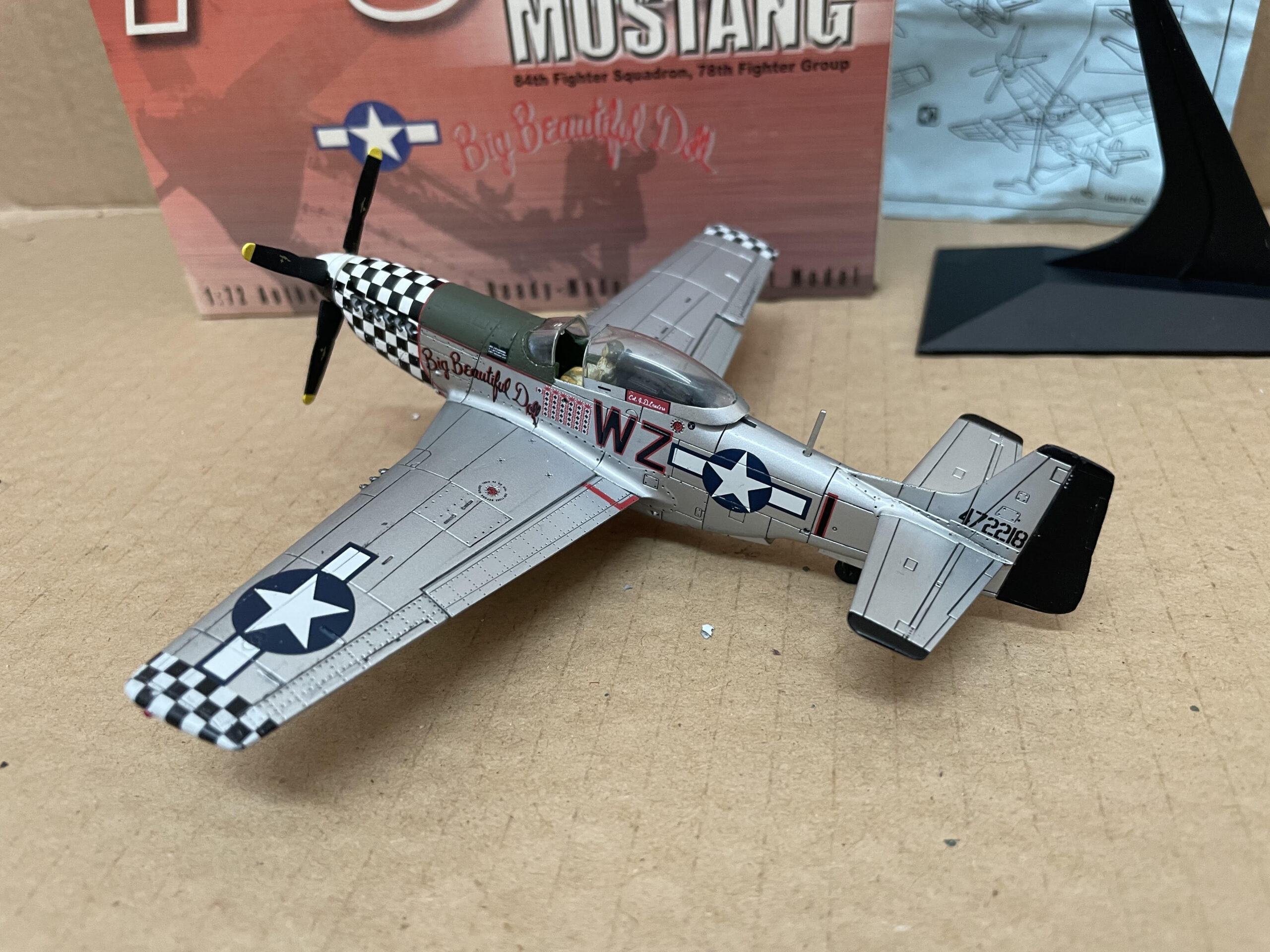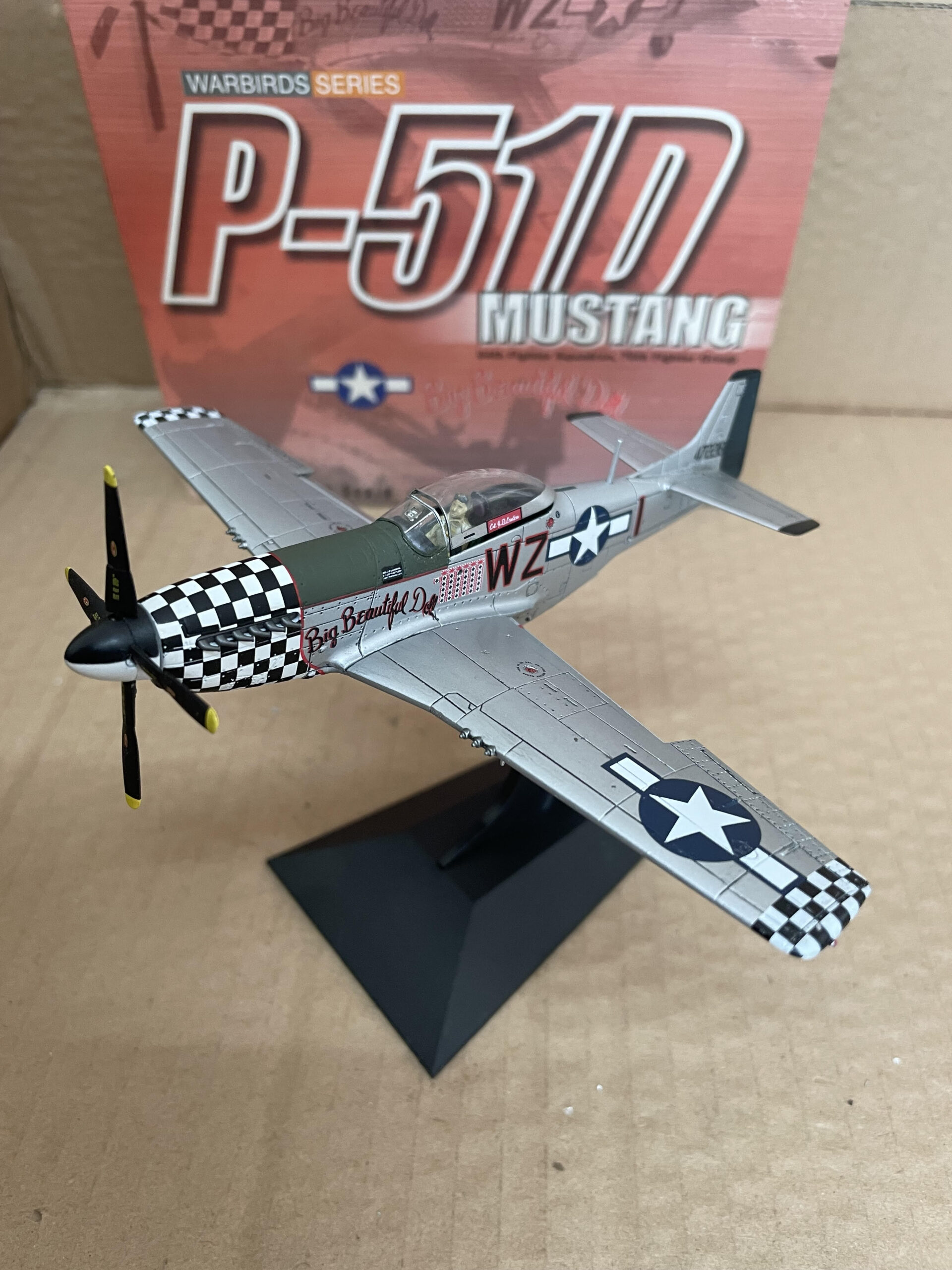North American P-51D Mustang – 78th FG, Big Beautiful Doll (Landers) USAAF DISPLAYED
Add to compare1 in stock
£39.99
1 in stock
Dragon Warbirds 1/72 scale 50014: North American P-51D Mustang #44-72218 of 78th FG, USAAF “Big Beautiful Doll”, John Landers, RAF Duxford, England, 1945. with amazing detail, optional undercarriage positions, stand and moveable canopy and flaps. Has to be seen to be appreciated. Now very hard to find.
Length 5.25 inches Wingspan 6.25 inches
PLEASE NOTE: Model has been previously displayed but complete with box, all parts and display stand. Has the following imperfections: Engine cowling repainted in olive drab (makes the model look 100% better!), propeller blade re attached, underwing drop tanks have only one attachment lug on each side, paint touched in where necessary. Photos of actual model
The Mustang modelled is 44-72218, the 192nd of a batch of three thousand P-51Ds ordered on 7th June 1944, 24 hours after D-Day, June 6th 1944. With callsign 472218, it was coded WZ-I while flown in the European Theatre of Operations and carried the nose art of ‘Big Beautiful Doll’. It was flown by Colonel John Landers, Officer Commanding of the 78th Fighter Group, who flew a series of P-38s and P-51s, all of which were named ‘Big Beautiful Doll’. From the 38th FS of the 55th FG he was promoted to command the 357th FG before moving to Duxford to take command of the 78th. After the war Landers commanded the 361st FG. He scored 14.5 victories, 8.5 with the Eighth Air Force.
Designed to meet an RAF requirement for fighter-bomber and reconnaissance aircraft, the P-51 Mustang was first flown on October 26th, 1940. This versatile aircraft was capable of escorting bombers on long-range missions, engaging in dogfights, and dropping down to destroy German targets on the ground. At least eight versions of the P-51 were produced, but it was the definitive P-51D that gave the Mustang its classic warbird appearance. Britain and the US both tested the airframe with the Rolls-Royce Merlin engine, which gave the aircraft tremendous performance gains. The Truman Senate War Investigating Committee called the Mustang “the most aerodynamically perfect pursuit plane in existence.
“North American P-51D Mustang in the superb markings of “Big Beautiful Doll” of the 84th Fighter Squadron,78th fighter Group, as flown by ace pilot John Landers. 1/72 scale, displays superbly
The North American Aviation P-51 Mustang was an American long-range, single-seat fighter and fighter-bomber used during World War II, the Korean War and in several other conflicts. During World War II Mustang pilots claimed 4,950 enemy aircraft shot down, second only to the Grumman F6F Hellcat.
It was conceived, designed and built by North American Aviation (NAA), under the direction of lead engineer Edgar Schmued, in response to a specification issued directly to NAA by the British Purchasing Commission; the prototype NA-73X airframe was rolled out, although without an engine, 102 days after the contract was signed. The Mustang was originally designed to use a low-altitude rated Allison V-1710 engine, and was first flown operationally by the Royal Air Force (RAF) as a tactical-reconnaissance aircraft and fighter-bomber. The definitive version, the P-51D, was powered by the Packard V-1650-7, a licence-built version of the Rolls-Royce Merlin 60 series two-stage two-speed supercharged engine, and armed with six .50 caliber (12.7 mm) M2 Browning machine guns.
From late 1943, P-51Bs (supplemented by P-51Ds from mid-1944) were used by the USAAF’s Eighth Air Force to escort bombers in raids over Germany, while the RAF’s 2 TAF and the USAAF’s Ninth Air Force used the Merlin-powered Mustangs as fighter-bombers, roles in which the Mustang helped ensure Allied air superiority in 1944. The P-51 was also in service with Allied air forces in the North African, Mediterranean and Italian theatres, and saw limited service against the Japanese in the Pacific War.
At the start of Korean War the Mustang was the main fighter used by the United Nations. Jet fighters, including the F-86, took over this role, and the Mustang became a specialized ground-attack fighter-bomber.
Despite the advent of jet fighters, the Mustang remained in service with some air forces until the early 1980s. After World War II and the Korean War, many Mustangs were converted for civilian use, especially air racing.
| Weight | 0.9 kg |
|---|

